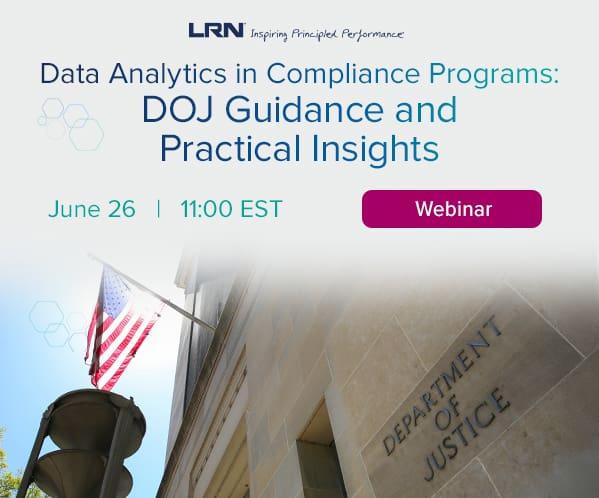In the 15 years since Bernie Madoff’s conviction for running the largest known Ponzi scheme in history, regulatory agencies have sought to tighten their oversight of the financial sector, paying special attention to anti-money laundering (AML) and know your customer (KYC) rules. Tracy Moore, director of thought leadership and regulatory affairs at regtech platform Fenergo, looks back at the Madoff scandal and explores the state of AML and KYC standards today.
On June 29, 2009, Bernie Madoff was sentenced to 150 years in prison for running a massive Ponzi scheme worth an estimated $65 billion. The scheme, a notorious evasion of AML and KYC regulations, has had a lasting impact on the global regulatory landscape.
In response to the glaring oversight failures and the devastating consequences of Madoff’s fraud, the SEC took significant steps to bolster its regulatory framework and internal procedures. To mitigate the risk of similar lapses in financial oversight, the SEC intensified its scrutiny of how brokerages handle the custody of customer funds. Recognizing the critical role of custody practices in safeguarding investor assets, the SEC implemented stricter regulations and oversight mechanisms to ensure compliance and accountability among financial institutions.
Despite two decades passing, authorities continue to grapple with gaps in AML policies while combating financial crime. Yet, there’s hope on the horizon, with technology bridging silos and facilitating information sharing among financial institutions, leading to improved monitoring practices. A good example is Singapore’s recent launch of COSMIC, a digital platform aimed at combating financial crime.
A look back at Madoff’s scheme
Madoff, who died in prison in 2021, was able to fly under the radar for so long largely because he conducted his operations through a separate brokerage firm, enabling him to circumvent the rigorous AML and KYC procedures typically mandated by banks and other financial institutions. His scheme also relied heavily on personal connections and word-of-mouth referrals. Together, these tactics effectively shielded him from regulatory and law enforcement scrutiny that might have uncovered suspicious activities through formal protocols.
Furthermore, financial institutions typically operate with their own customer data alone. Without a system for quickly sharing suspicious activity reports (SARs) far and wide — whether to monetary authorities, banks or regulators — red flags raised by one institution are not necessarily seen by others.
It was this lack of holistic oversight that helped Madoff’s scheme go unnoticed for so long, and it could enable others in the future. In fact, if it hadn’t been for the 2008 global financial crash, which caused a flurry of investors to trigger redemptions, Madoff, the one-time chairman of the Nasdaq stock exchange, just might have gotten away with it. Despite several investigations by the SEC, Madoff’s illegitimate scheme was not unearthed until it was much too late for its victims, many of whom lost life savings, retirement pots and college tuition funds.
As Sanctions Lists Grow, So Do Avoidance Schemes
‘Blocked’ entities increasingly using corporate bond measures to gain access to financial markets
Read moreDetailsThe state-of-play of AML and global collaboration
It’s surprising that over the past 15 years, there hasn’t been significant progress in breaking down the barriers between financial institutions when it comes to sharing information about suspicious activity. As long as this continues, there will always be a risk that fraudulent schemes and large-scale financial crime operations, such as money laundering, will evade detection.
Money laundering continues to be a massive global problem. According to the UK government, money laundering costs the British economy more than £100 billion each year. Singaporean authorities seized or froze assets worth more than $2 billion in one of the city-state’s largest-ever money laundering investigations this past August. And reports indicate that about $3 trillion was laundered worldwide in 2023.
Notably, that $3 trillion figure is only an estimate, as it is difficult to accurately quantify the total cost of financial crime with many instances going undetected.
Singapore’s singular approach
The substantial sums involved in money laundering highlight the vast financial resources at stake and the detrimental effects on both national economies and global financial stability. As such, addressing money laundering requires a coordinated and multi-faceted approach involving international cooperation, enhanced regulatory oversight and robust enforcement efforts to disrupt and deter illicit financial activities.
The Monetary Authority of Singapore is one of the few authorities set to break the mold with regards to financial institutions’ siloed approach to sharing suspicious activity. Singapore’s initiative, aptly named COSMIC, which stands for Collaborative Sharing of Money Laundering/Terrorism Financing, launched on April 1.
This innovative digital platform serves as a conduit for participating banks and other financial institutions to securely exchange information regarding suspicious customers or transactions. By facilitating this collaborative sharing of data, COSMIC aims to streamline the identification and detection of potential instances of money laundering or terrorist financing, thereby enhancing the efficiency and effectiveness of anti-financial crime efforts.
If COSMIC proves successful, it has the potential to revolutionize the fight against financial crime across Asia and beyond. By leveraging technology and fostering greater cooperation among market authorities and banks, COSMIC could significantly bolster the collective ability to detect and disrupt illicit financial activities. While COSMIC’s impact may be most immediately felt in Asian markets, regulators in leading Western markets should closely monitor its implementation and outcomes. The lessons learned from COSMIC’s deployment could inform discussions around the adoption of similar collaborative platforms in other jurisdictions.
Looking ahead
Until more collaborative approaches become the norm across the globe, there is always the risk that cunning will prevail. Financial criminals are adept at exploiting gaps in regulations and jurisdictions, but by fostering greater cooperation and information sharing among regulatory bodies, financial institutions and law enforcement agencies worldwide, we can create a more formidable defense against illicit activities. This entails not only sharing data but also harmonizing AML and KYC standards to ensure consistency and effectiveness across borders.




 Tracy Moore is director of thought leadership and regulatory affairs at Fenergo. She has more than 25 years of experience in investment banking, covering the areas of client onboarding, legal documentation and compliance in both capital markets and corporate lending. In addition to her time as executive director of wholesale compliance advisory at Rabobank, she also oversaw compliance of both capital markets and corporate lending client onboarding at SunTrust Bank (Truist) for over a decade. Moore has also worked for Man Investments and Goldman Sachs in Switzerland. She has an undergraduate degree from Florida State University and a law degree from John Marshall School of Law.
Tracy Moore is director of thought leadership and regulatory affairs at Fenergo. She has more than 25 years of experience in investment banking, covering the areas of client onboarding, legal documentation and compliance in both capital markets and corporate lending. In addition to her time as executive director of wholesale compliance advisory at Rabobank, she also oversaw compliance of both capital markets and corporate lending client onboarding at SunTrust Bank (Truist) for over a decade. Moore has also worked for Man Investments and Goldman Sachs in Switzerland. She has an undergraduate degree from Florida State University and a law degree from John Marshall School of Law. 








